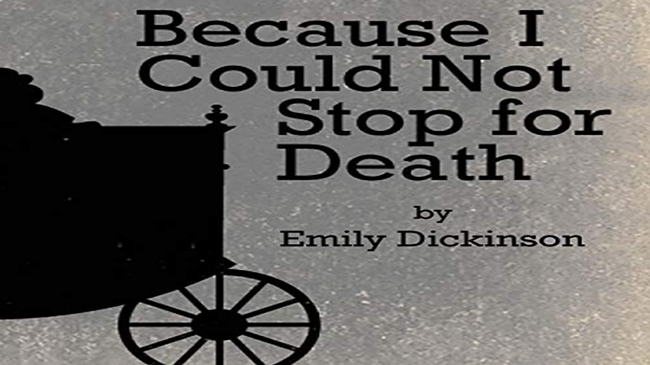Because I could not stop for Death -BY EMILY DICKINSON
Because I could not stop for Death
-BY EMILY DICKINSON
Because I could not stop for Death –
He kindly stopped for me –
The Carriage held but just Ourselves –
And Immortality.
We slowly drove – He knew no haste
And I had put away
My labor and my leisure too,
For His Civility –
We passed the School, where Children strove
At Recess – in the Ring –
We passed the Fields of Gazing Grain –
We passed the Setting Sun –
অনুবাদ:
কারণ আমি মৃত্যুর জন্য থামতে পারিনি
– এমিলি ডিকিনসন
কারণ আমি মৃত্যুর জন্য থামতে পারিনি,
তিনি দয়া করে আমার জন্য থামলেন।
গাড়িটি থামলো কেবল আমাদের জন্য
আর অমরত্বের জন্য।
স্কুল ছেড়ে, শিশুদের ছুটির সময় পার হয়ে,
শস্যক্ষেতগুলো ছেড়ে
আমরা যাচ্ছিলাম
অস্তগামী সূর্যের দিকে
Summary/ Theme/ Appreciation:
The carriage is the symbol of the journey from life to death, which picks up people marked by death to their passage to the after world. In the second stanza, the poet describes the three stages of man using the symbols of school (childhood) grain fields (youth) and the setting sun (old age and death).
Or,
In her poem ‘Because I could not stop for Death’, Emily Dickinson describes a close encounter with “Death” and “Immortality”. She uses personification to portray “Death” and “Immortality” as characters. Her familiarity with them at the beginning of the poem causes the reader to feel at ease with the idea of death. However, as the poem progresses, a sudden shift in tone causes readers to see it for what it really is, cruel and evil.
Or,

